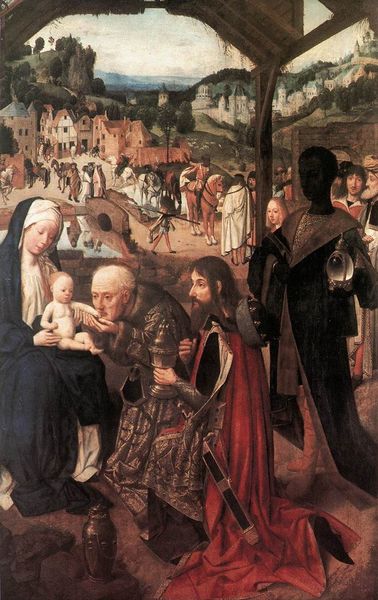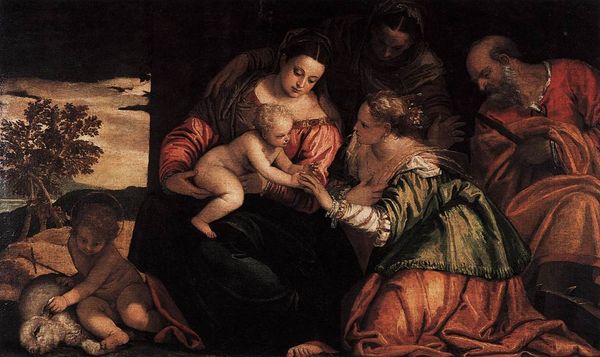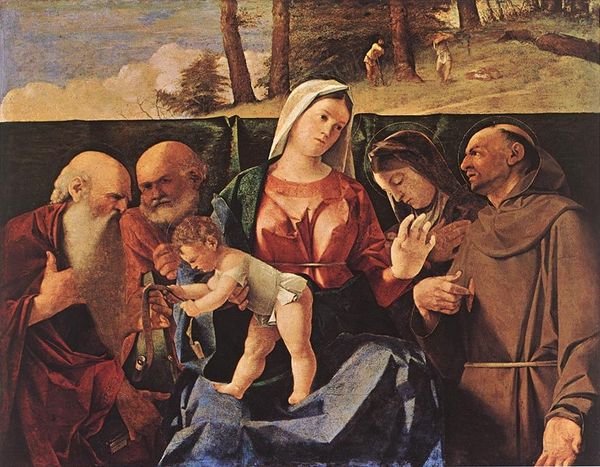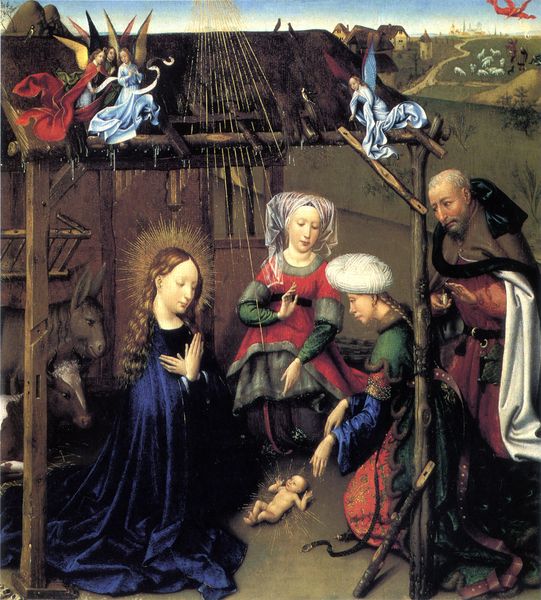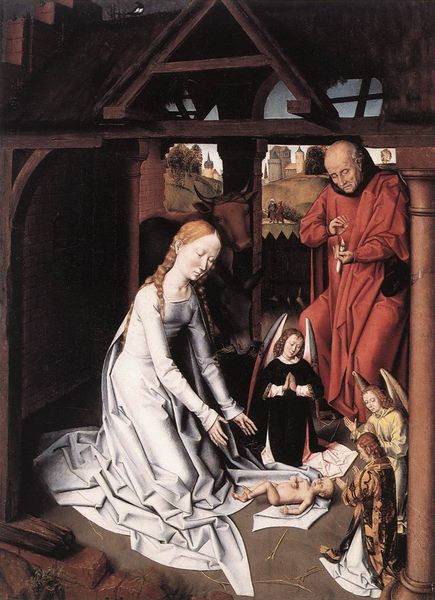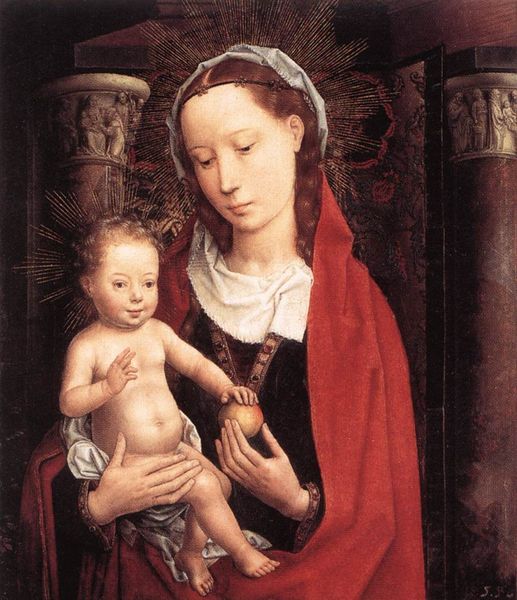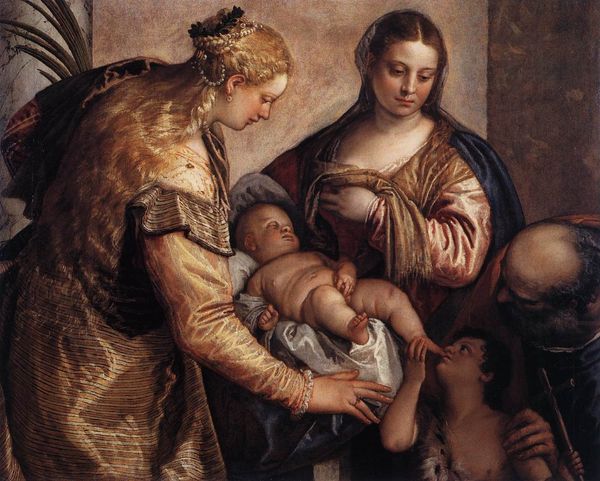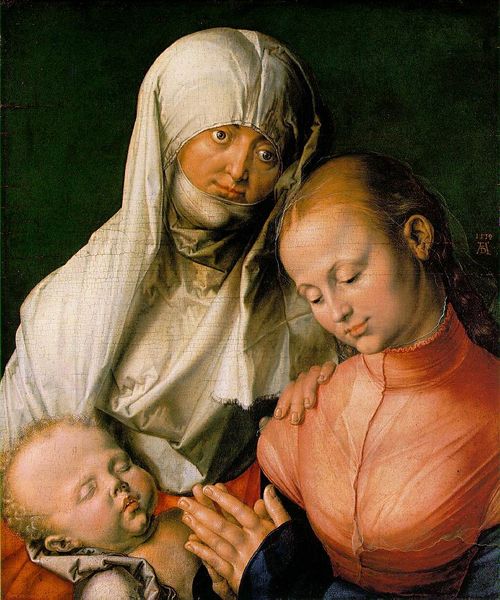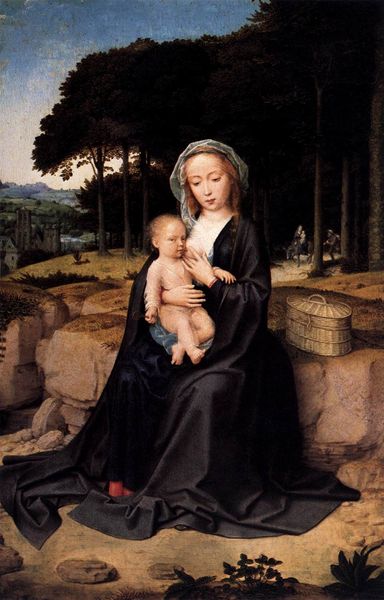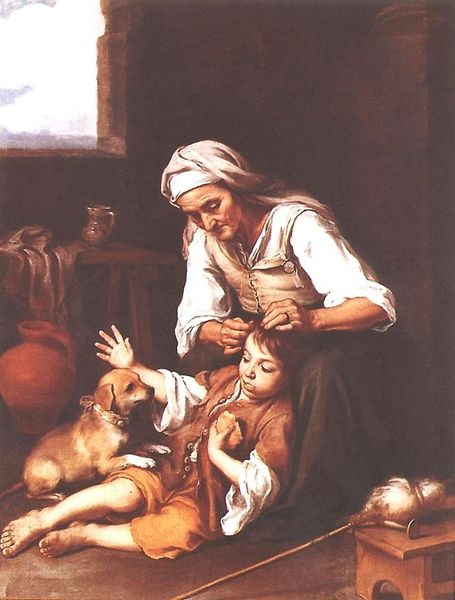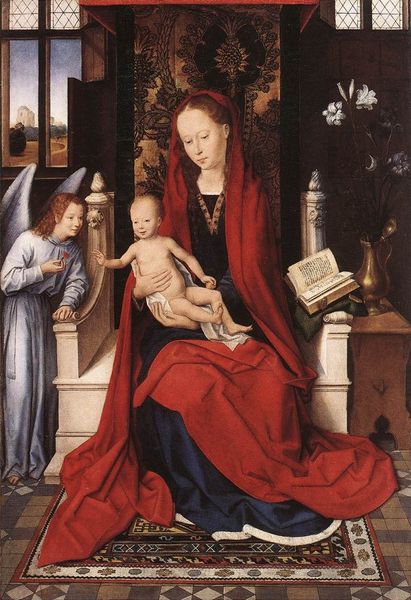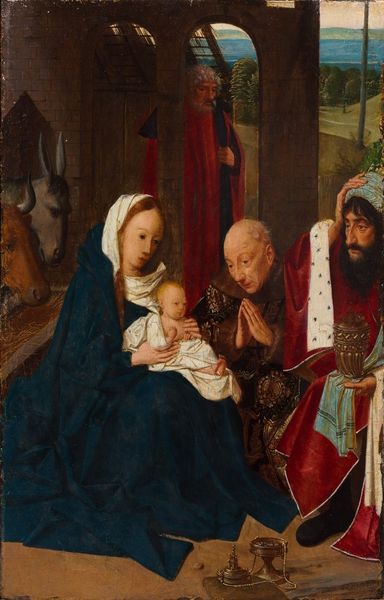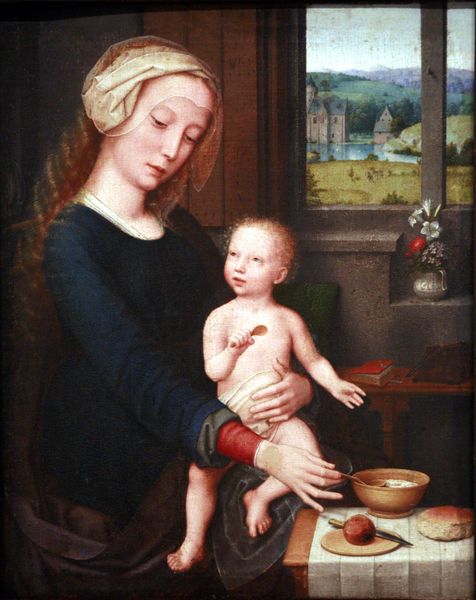
painting, oil-paint
#
portrait
#
narrative-art
#
painting
#
oil-paint
#
sculpture
#
figuration
#
11_renaissance
#
child
#
costume
#
christianity
#
history-painting
#
italian-renaissance
#
christ
Copyright: Public domain
Curator: Let's take a closer look at "Adoration (fragment)" by Albrecht Dürer, created around 1504 and currently residing in the Uffizi Gallery in Florence. Editor: My first impression is the textural richness. The folds of fabric, the rough stone, even the animal hide – you can almost feel the differences in material. Curator: Dürer was indeed a master of depicting textures. This piece showcases his early interest in Italian Renaissance art while retaining his own Northern European sensibility. Consider how the themes of wealth, piety and adoration come together here, mirroring not only the religious tradition, but its elite supporters as well. Editor: Absolutely, and that comes through the medium of oil on wood. I find it intriguing how he has used oil paint to mimic textures like the golden chalice held by one of the three kings – its materiality screams wealth and status. Curator: The politics are right there, too. This fragmented panel once formed part of a larger altarpiece, commissioned to demonstrate social and political connections, power, and allegiance to religious institutions. Who were the people connected to the original commission, what did the work communicate for its immediate audience and subsequent generations, and who paid to bring all this artistic materiality into being? Editor: Good point, and focusing on that socio-economic and making aspect can almost allow us to side-step the obvious iconography of Madonna and child and religious narrative of the Adoration, if even momentarily. It's a fascinating counterpoint. Curator: Dürer uses religious themes to engage with social concerns of his time, revealing how artistic practices are interwoven with politics and faith. The composition invites consideration not only of religious meaning but of the art's original social context and role within that historical network. Editor: And how this "fragment" survives, influencing modern audiences! Thank you. Curator: A telling perspective for our listeners indeed, providing crucial insight!
Comments
No comments
Be the first to comment and join the conversation on the ultimate creative platform.
